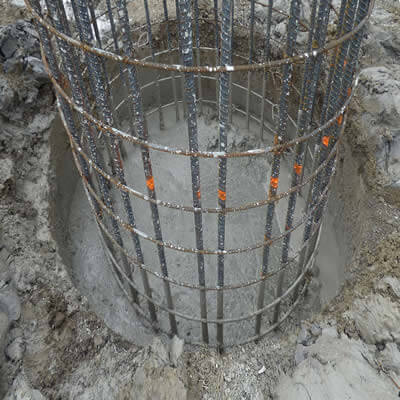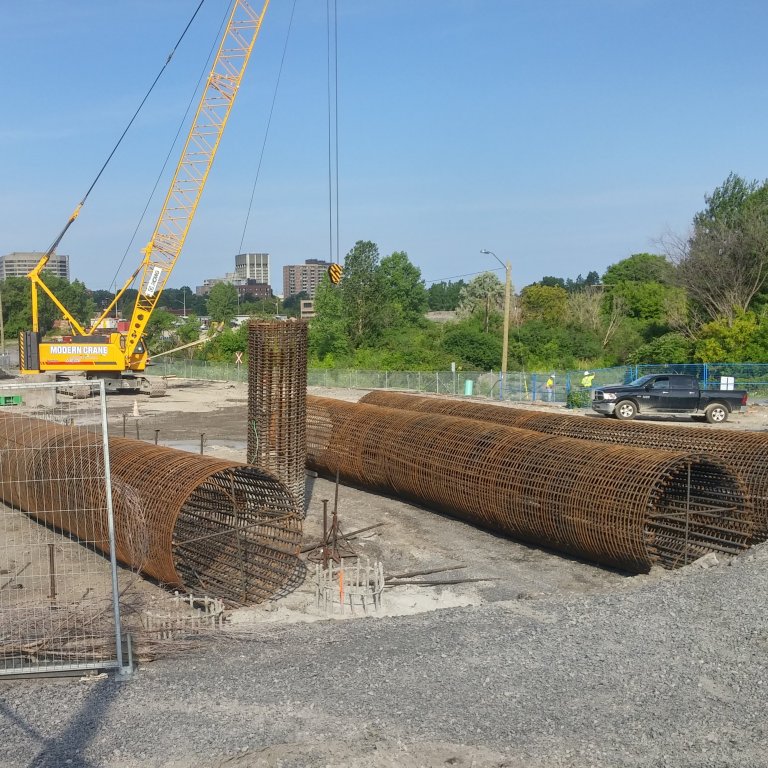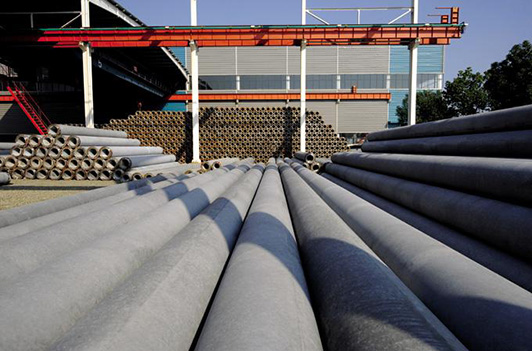Why and When to Use Concrete Piles?
 Piles and drilled shafts are an important category of foundations. Despite their relatively high cost, they become necessary when we want to transfer the loads of a a heavy superstructure (bridge, high rise building, etc.) to the lower layers of soil. Another reason for choosing a pile foundation is the condition and quality of soil layers. Piles are structural members made of timber, steel, or concrete. Based on how they transfer the load into the subsoil, piles can be categorized as friction piles, and end-bearing piles. In friction pile, the load transfer is done through shear stress generated along the interface of pile and soil. In end-bearing pile, the load is transferred through the tip of the pile to a firm stratum. Drilled shaft, as its name implies, are drilled into the subsoil, and then filled with concrete. Generally, drilled shafts have larger cross sectional area.
Piles and drilled shafts are an important category of foundations. Despite their relatively high cost, they become necessary when we want to transfer the loads of a a heavy superstructure (bridge, high rise building, etc.) to the lower layers of soil. Another reason for choosing a pile foundation is the condition and quality of soil layers. Piles are structural members made of timber, steel, or concrete. Based on how they transfer the load into the subsoil, piles can be categorized as friction piles, and end-bearing piles. In friction pile, the load transfer is done through shear stress generated along the interface of pile and soil. In end-bearing pile, the load is transferred through the tip of the pile to a firm stratum. Drilled shaft, as its name implies, are drilled into the subsoil, and then filled with concrete. Generally, drilled shafts have larger cross sectional area.
Why and When to Use Concrete Piles?
 Different types of concrete piles are used for different applications. Cast-in-place concrete piles, or driven shafts are two great examples of how the can be produced (made) and installed. When choosing a pile type, one should generally consider the following conditions:
Different types of concrete piles are used for different applications. Cast-in-place concrete piles, or driven shafts are two great examples of how the can be produced (made) and installed. When choosing a pile type, one should generally consider the following conditions:
1. Poor quality of upper soil layers
2. When we have expansive soil in construction site
3. To resist uplift forces
4. To resist lateral loads (horizontal)
5. Bridge abutment and piers
Concrete Piles
 Concrete piles can be either pre-cast pile, or cast in-situ. Concrete piles are generally reinforced. For pre-case piles, the reinforcement brings extra strength to resist bending moment during pile pick up, transportation, vertical loads, and bending moment as a result of lateral loads. They can be built in different sizes and shapes, as required for each specific use. Pre-case piles can be prestressed as well.
Concrete piles can be either pre-cast pile, or cast in-situ. Concrete piles are generally reinforced. For pre-case piles, the reinforcement brings extra strength to resist bending moment during pile pick up, transportation, vertical loads, and bending moment as a result of lateral loads. They can be built in different sizes and shapes, as required for each specific use. Pre-case piles can be prestressed as well.
Cast in-situ piles are made by drilling a hole into the soil, and then filling out with concrete. Cast in-situ piles can be divided into two main categories: cased, or uncased. Cased concrete piles are made by driving a steel casing into the soil. In this case, the mandrel is placed inside the casing. After reaching desired depth, the mandrel is withdrawn, and the casing is filled with concrete. In the case of the uncased piles, the casing will be gradually withdrawn.

